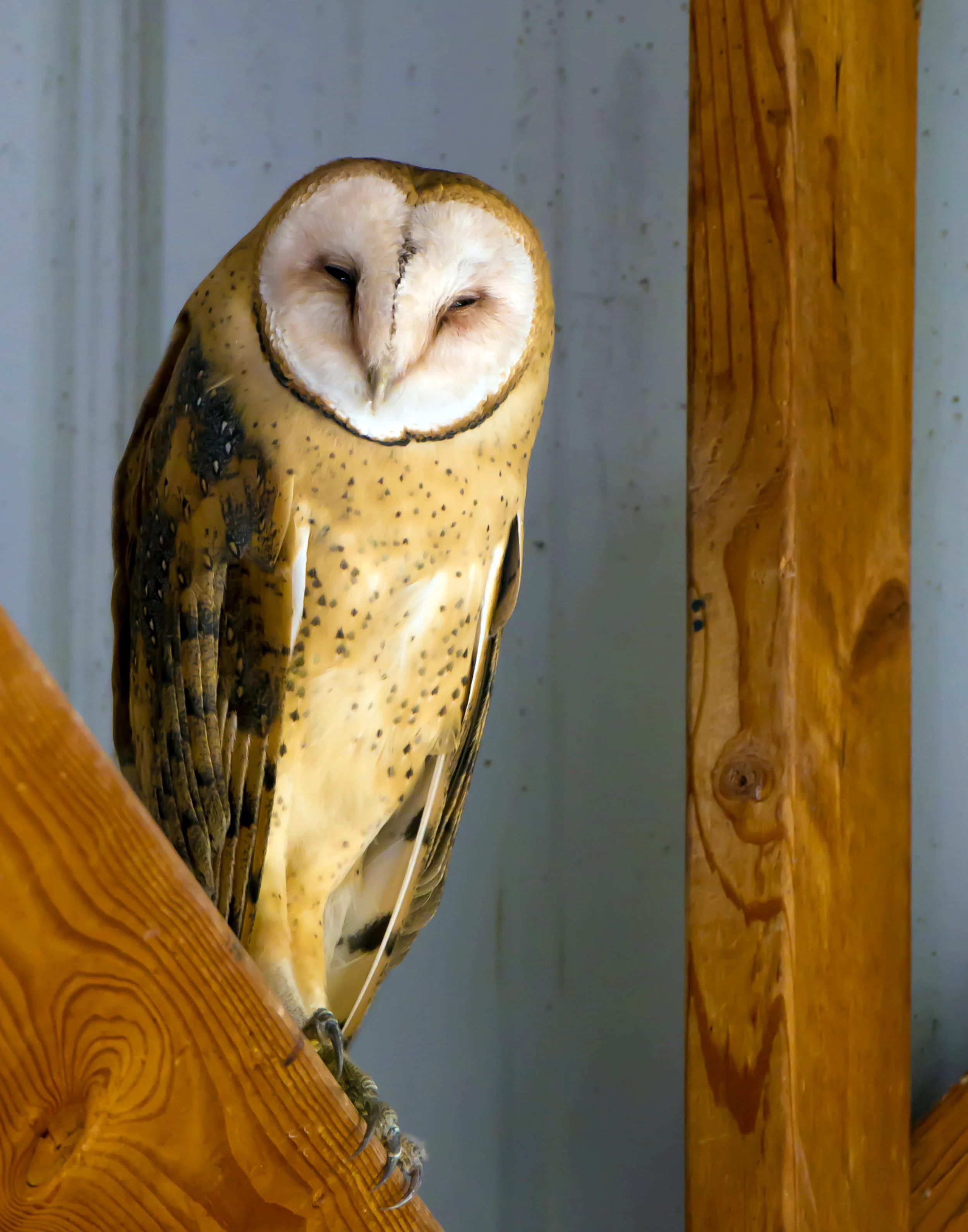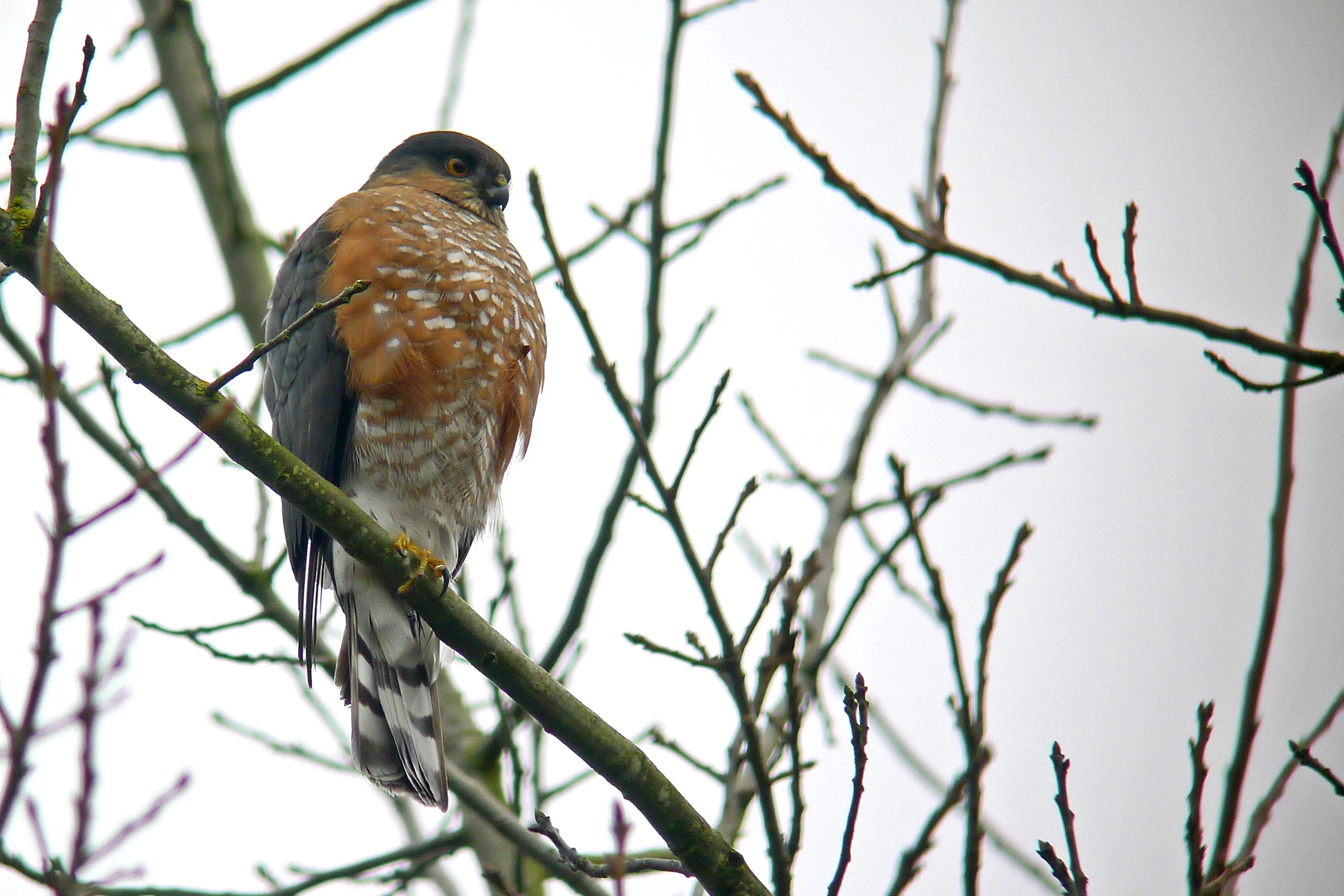Gallery - Birds of Prey
One of our smallest owls, the Saw-whet Owl is nocturnal when it hunts small mammals and roosts during the day.
The Northern Hawk Owl is a bird of the circumpolar boreal forest but in irruptive years it can make a rare winter visit to Washington.
A powerful totem of conservation, the Osprey suffered dramatic losses in the mid-20th Century due to DDT pollution, but the species has now recovered to exceed its historical numbers and breed in a wide variety of habitats.
An agile and aggressive hunter, the Prairie Falcon evolved in the arid environment of the interior west of North America.
The Great Gray Owl, named for its size and plumage color, is an owl that breeds around the world in the northern boreal forests.
The Western Screech-Owl is common in many types of woodland but difficult to find because of its up-all-night lifestyle. It’s bouncing ball type call is a distinctive series of toots that “begins slowly and then accelerates such as too too tootootootootoo” (Dunne).
This aggressive hawk was prized by falconers for its speed of flight and courage in attacking prey.
“The Northern Spotted Owl is an indicator species for Pacific Northwest old-growth forest; in other words, the state of this bird represents the state of these forests. In this role, it has become an icon of efforts to preserve old-growth forests in the region” (Bannick).
The Barred Owl (BARR, due to conflict with Barn Owl being BAOW) is about 21” long with a wingspan of 42” and a weight of 1.6 lb. (720 g). This compares with 17.5”, 40” WS and 1.3 lb. for its cousin, the Spotted Owl.
The Short-eared Owl is an open country, ground-nesting species and one of the world’s most widely distributed owls. One of the ten subspecies worldwide is Pueo (Pu-a’-o), the Hawaiian Short-eared Owl A. f. sandwichensis.
Now is the time of year to keep your ears perked up for the hoo-hoo-HOO-hooo-hoo Good for you, me too call of the Great Horned Owl, probably the most widespread owl in North America which can be found in a variety of wooded sites.
The combination of the Barn Owl’s eerie screaming call, its ghostly white color, and its roosting in church belfries gave rise to many superstitions associated with it. In English folklore the Barn Owl had a sinister reputation and poets Robert Blair and William Wordsworth considered it a “bird of doom”.
The Red-tailed Hawk (RTHA) is a member of the buteo family of high flying hawks and its length varies from 19-25". The genus name Buteo is from the Latin for a kind of falcon or hawk. The species name jamaicensis is Latin for island of Jamaica, West Indies, where the first scientific specimen came from.
The genus name Cathartes (kath-ARE-tis) is from the Greek, meaning cleanser, hence scavenger. The species name aura (OW-rah) is a South American or Mexican name from the Latinized name aurum for gold.
Our only raptor that hovers over the water and plunges in feet-first for fish (the Bald Eagle may pick up fish from the surface, but doesn’t dive into the water). Fish are carried head first as the bird flies off. It is about 21-25" long and has a wingspread of 4 ½ to 6 ft.
The life cycle of Swainson’s Hawks provides an excellent illustration of the importance of having a hemispheric perspective on bird conservation. Using the Central and Pacific flyways this western North American species makes an annual round trip migration of about 12,000 miles to and from southern South America and the Argentine pampas.
The black speck was far out on the horizon but through binoculars I was able to see that it was a California Condor moving in our direction as we stood on the South Rim of the Grand Canyon. In a matter of seconds it approached us at a speed of nearly fifty miles per hour without flapping its wings. Riding the wave of the thermal coming up from the hotter air deep in the canyon the condor suddenly arrived in full view above us and then banked to slow enough to make three circles over the gathering crowd.
The White-tailed Kite (WTKI) is about 15” long with a wingspan of 39” and a weight of 12 oz. (340g). The genus name Elanus (EL-an-us) is Latin from the Greek elanos, kite, and elauno, to drive.
One of eight species of sea eagles in the world from the genus Haliaeetus from the Greek aliaetos, the sea eagle. It is named for its white head; again from the Greek - leukos, of the color white, and kephale, head.
The Merlin (MERL) is about 10" long with a wingspan of 24" and a weight of 6.5 oz. (190g). The genus name Falco (FAL-koh) is Latin for hawk, referring to the hooked (falcate) shape of the claws.
The Northern Harrier is the bird of many names. It is the Marsh Hawk which cruises low over marshes and fields. It is the Hen Harrier, as it is called in Europe and Asia, presumably because it made off with a hen every now and then.
Cooper’s Hawk is our mid-sized woodland raptor which uses stealth and powerful flight thrusts to attack other birds and small mammals. It will sometimes attack from behind shrubbery, but often hunts from a perch, remaining still until it strikes.
hrub, it is likely to be a Rough-legged Hawk. They hunt from low perches or low flight and feed on voles, ground squirrels, mice and sometimes birds it can find on the ground.
Our smallest accipiter, the Sharp-shinned Hawk, commonly known as the “Sharpie” is a bird of the forest. It is compact, quick and agile with short wings and long tail that help it navigate in wooded areas where it hunts small birds.
If you see a small, long-winged bird hovering over an open field, most of the time it will be an American Kestrel. This type of hunting pattern is used by only a few species of birds and it is a trademark for a kestrel, which hovers by facing into the wind, flapping its wings and spreading its tail.
The Gyrfalcon (GYRF) is about 22” long with a wingspan of 47” and weight of 3.1 lb. (1400 g). It is the largest falcon in the world.
The genus name falco is Latin for falcon, from the Latin falx, an agricultural tool with a curved blade, such as a scythe or sickle, which refers to the long toes with sharply curved talons. The species name is from peregrinus also from the Latin for foreign or exotic.
The Northern Pygmy-Owl (NOPO) is about 6.75” long with a wingspan of 12” and weight is 2.5 oz (70g). The genus name, Glaucidium (glaw-SID-ih-um), is shared with the Ferruginous Pygmy-Owl and is Latin from the Greek glaux, diminutive of glaukidion, meaning a kind of owl, so-called from its glaring eyes.
The diminutive Burrowing Owl is one of our most endearing birds. It can look a bit comical as it peers over the rim of its burrow entrance bobbing and twisting its head. Cowboys have called it the “Howdy Owl” in response to this behavior.
This large white owl is 20-23 inches (the size of a Great Horned Owl) and is merely a winter visitor here. Its four letter code is SNOW. It has a rounded head and yellow eyes.






























